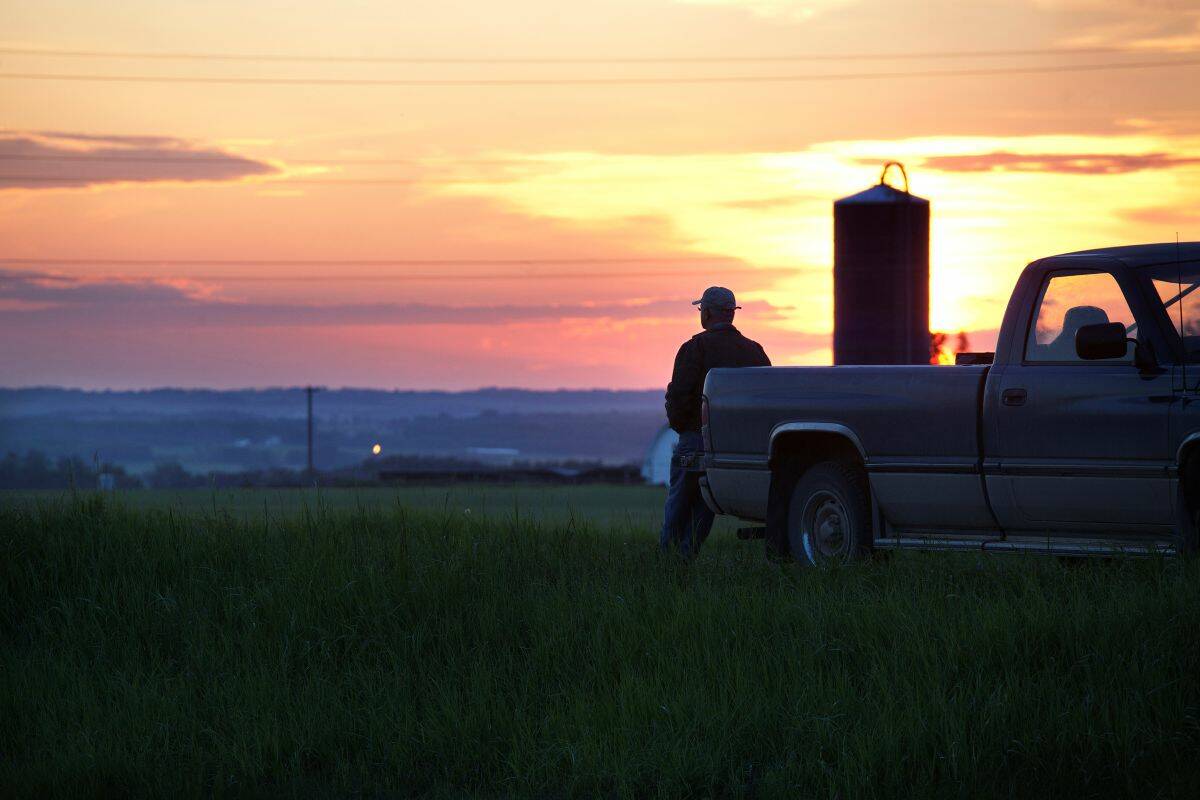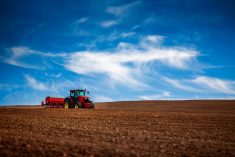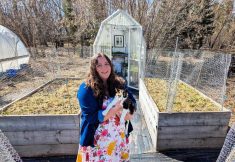In the November 2013 Country Guide article “Selling Out Farming,” I wrote about the growing demand by private investors and speculators for farmland. However, the impact private investors have on land values, rural society and farming as we know it today will be minor compared to the most recent group of buyers into the farmland market: pension funds.
The old adage says: “Farmers live poor but die rich.” Perhaps a more accurate perception would say: “Farmers live cash poor but die asset rich.”
In part, both statements reflect the propensity of farmers to invest a large part of the returns from farm operations into land ownership based on the appreciation of that land over time.
Read Also

It doesn’t have to be the end for your farm
Options for farmers without successors to pass on the farm.
For many farmers, land ownership has served as their personal pension plan. Instead of paying into a pension plan or even an RRSP, farmers have invested in land with the expectation that the appreciation in the value of that land will translate into a stable income when they quit farming and rent the land out or sell it.
Now, pension funds are interested in adding farmland to their investment portfolios for many of the same reasons farmers have sought to own it.
Farmland investments in the developed world are considered very safe. Land isn’t easy to steal and doesn’t disappear. Historically, total farmland returns have exceeded all other asset classes. Over the past 20 years, farmland has outperformed the TSX and the S&P 500.
Farmland investments are also low volatility. Economists have estimated the volatility of owning Canadian farmland at less than one quarter of the volatility of the S&P 500.
Farmland also has a low correlation to other asset classes so farmland can easily diversify any and all investment portfolios.
Plus, like farmers, pension funds find one of the most attractive features of investing in farmland is that farmland also yields a reliable cash flow. Farmers eagerly compete to rent land regardless of who owns the land.
As a result, farm leases often yield a rate of return that exceeds those of other safe investments. To pension funds, farmland is considered “gold with yield.”
Until now, however, there have been two major obstacles to pension funds investing in farmland, starting with the fact that pension funds had no way of accumulating large enough properties.
Pension funds have no interest in buying a quarter here and there, or even a million-dollar farm. Pension-fund investing typically starts at an investment of $100 million or more, and there are few if any farms of this magnitude for sale.
Secondly, pension funds have no interest in managing farm operations. They are simply looking for return on investment. While more than willing to invest money into farmland, they want someone else to manage the leasing or farming of that land, as well as to accept the production risk of farming.
Both these obstacles have been overcome in the last decade through the appearance of scores of private agricultural investment funds. Savvy investors turned to agricultural funds as interest rates fell and returns in other sectors of the economy sagged due to the global economic crisis. Private investors witnessed the world food shortages of the mid-2000s and they are also well aware of the increasing global population, the loss of agricultural land to urbanization, and even the risk of declining food production because of climate change.
All of these factors are reasons why investors believe agriculture is a growth industry and why they have rushed into buying agricultural land.
However, most investors and speculators have a desire to secure their profits within a relatively short time frame. Land speculators and agricultural funds are no different. Right now, many private agricultural funds that have accumulated large land holdings are seeking buyers of their portfolios to lock in the recent record appreciation in land values. Most of these agricultural portfolios not only include land, but the services of the professional land manager or operator who has been managing the lands for the agricultural fund.
From the Grainews website: Farmland prices and net farm income
This all means that the investor-owned agricultural land portfolios that are coming on the market now are exactly what pension funds have been looking for: large acreage, single-owner, professionally managed tracts of high-quality agricultural land yielding good rental returns.
As a result, in the past few years we have seen a significant amount of land purchased by pension funds, and it appears the interest by pension funds is set to skyrocket.
The Canada Pension Plan now owns farmland!
In the November article I reported on the purchase of 2,500 square km of timber and agricultural land in Australia by the Alberta Investment Management Corporation, which invests on behalf of numerous Alberta pension, endowment and government funds.
Since that report, there has been a major purchase much closer to home by another Canadian pension fund. On January 10, 2014, Assiniboia Farmland Limited Partnership completed a sale of its entire farmland portfolio to the Canada Pension Plan Investment Board (CPPIB) for roughly $128 million.
As a result of this sale, 115,000 acres of prime Saskatchewan farmland is now owned and controlled by the investment arm of the Canada Pension Plan (CPP).
The most significant change between ownership by Assiniboia and CPP is the expected ownership time frame. The Assiniboia website states: “Assiniboia Farmland Limited Partnership was established in 2005 to provide investors with a turn-key opportunity to gain exposure to Saskatchewan farmland with the stated intention of creating a liquidity event for investors within a reasonable window of time.”
“Most private farmland investment funds only expect to own the land for five to seven years,” explains Brad Farquhar, a founder of Assiniboia Farmland. “Pension funds are looking at a much longer ownership period — up to 70 to 100 years.”
The 115,000 acres now owned by the CPP will likely not be available for purchase by actual farmers for generations, if ever.
Nor should we expect this to be a one-time purchase of farmland by the CPP. In fact, further investigation revealed the Assiniboia deal wasn’t even the first purchase of farmland for the CPP. Earlier in 2013, CPPIB purchased the farmland portfolio of North American Agricultural Investments LLC.
When asked about the North American purchase, CPPIB media officer May Chong said, “CPPIB made its first agriculture investment in a portfolio of high-quality and geographically diversified farmland in the U.S.”
Chong would not reveal the amount of land involved or the value of the farmland, citing a confidentiality agreement with the seller.
Furthermore, in the media release announcing the acquisition of Assiniboia, André Bourbonnais, senior vice-president for private investments at CPPIB said: “We look forward to working with management (of Assiniboia) to grow the portfolio and contribute to the development of the farming sector in Saskatchewan.”
Farquhar confirms that the management team of Assiniboia has agreed to an exclusive relationship with CPPIB to manage the CPPIB farmland portfolio as well as acquire more farmland for CPPIB in the future.
These farmland purchases by CPPIB are the result of a new agricultural investment program the board launched in 2012 that focuses on acquiring farmland in Canada, the U.S., Australia, New Zealand, and Brazil. According to the 2013 CPPIB Agriculture Investing Backgrounder paper provided by Chong, “the CPP Investment Board has adopted a strategy to broadly diversify the portfolio to enhance long-term returns. Within the $192.8 billion CPP Fund (as at September 30, 2013), which is expected to grow significantly, investments in agriculture align with CPPIB’s strategy to assemble a diversified portfolio of assets which are expected to deliver stable risk-adjusted returns over a long-time horizon.”
The paper also explains exactly why the CPPIB is investing in farmland. “Farmland is an asset class which is characterized by steady capital appreciation and long-term risk-adjusted returns. These characteristics make the asset class a good match for the long-term nature of CPPIB’s investment strategy.”
Nor are grain producers the only farmers who will have to compete with the billions of dollars held by the CPP when purchasing farmland. The backgrounder adds: “CPPIB will initially focus on annual row crops (grains and oilseeds), although we will be flexible in exploring opportunities to invest in other sectors such as perennial crops, dairy and pasture.”
To summarize, CPPIB considers farmland to be a stable, low-risk, long-term investment, and they intend to invest in agricultural land to diversify the nearly $200 billion CPP fund.
Other pension funds also own farmland
The CPP investment in farmland is a drop in the bucket compared to other pension fund purchases already made and that are planned. According to the Oakland Institute report “Down on the Farm, Wall Street: America’s New Farmer” as of late 2012, UBS Agrivest held over $800 million in farm assets on behalf of a long list of public pension plans ranging from those of people working in stores on army and air force bases to the Iowa Public Employees Retirement System.
The same report estimates that as of 2012 the Hancock Agricultural Investment Group controlled farmland holdings worth $1.8 billion on behalf of more than 10 pension plans.
The Teachers Insurance and Annuity Association-College Retirement Equities Fund did not own any farmland prior to 2007. “As of today,” the Oakland report said in 2012, “TIAA holds over $3 billion in farmland and nearly one million acres spread across South America, Australia, Eastern Europe and the U.S.”
Besides being one of the biggest pension funds in the world, the TIAA-CREF is now the biggest institutional farm buyer in the world.
A dangerous trend
“One industry source estimates there is currently $10 billion in institutional capital targeting U.S. farmland,” said Anuradha Mittal, executive director of the Oakland Institute, a California-based independent policy think tank. “The purchases we have seen up to now are only the beginning of an unprecedented land rush by institutional investors.”
While this inflow of new capital is a boon to those farmers nearing retirement and wanting to sell, Mittal fears the unmet demand for farmland by investors and pension funds has the potential to prevent many farmers from expanding their operations and will discourage anyone considering farming. Individual farmers simply cannot compete with the bank accounts of global pension funds.
Mittal sees a real risk to food security, and sees fewer farmers having the opportunity to own the land they farm as more and more land is owned by investors and funds.
Mittal also fears for the sustainability of farms, and is concerned about potential environmental impacts as landless farmers maximize production in order to meet the rental costs imposed by absentee landowners who are only concerned about generating top rental revenues.
Mittal said the reason the Oakland Institute wrote the “Down on the Farm” report was to increase awareness about the huge threat institutional investors pose to farmers, food security and the environmental sustainability of the agricultural industry.
“The report is not only a warning, but hopefully a tool farm groups can use to push for new agricultural policies which will protect our food system,” Mittal says. “Unless something is done, we are giving away our future.”
The report also outlines a number of strategies for farmers to use to compete with funds including farm linking, alternative financing, and trusts.
The “Down on the Farm” paper can be found here.
Where do we go to from here?
In Canada, the federal government isn’t concerned. “The influx of institutional investment in farmland has been marginal,” said a spokesperson at Agriculture and Agri-Food Canada. “Investment funds that buy land are generally renting the farmland to existing farmers, and this can allow farmers to expand without the capital needed to buy additional land.”
The funds justify their purchases by saying the money they invest in farmland enables farmers to grow their farms by giving them rental opportunities. They also see the transfer of funds as a way for those who want to get out of the industry to maximize the dollars they sell for, and they say it is a way to move cash from urban to rural areas.
What funds do not address is how their purchase of farmland limits who is able to rent that land in the future. Without question, there is a danger that fund purchases of land will limit the ability of new farmers to get into the industry and for small farm operations to rent additional land.
Fund reasoning also overlooks the fact that improvements in farmer’s equity come not just from returns from production but also from appreciation in assets — the biggest being land. Various studies have shown about half of the growth in farm equity is a result in the appreciation in land values. When farmers no longer own the land, this equity appreciation flows out of the actual farm operation.
However, the biggest unknown is whether instead of “living cash poor and dying asset rich,” the next generation of farmers must both live cash poor and die asset poor? Are farmers being pushed back to a time when farmers were no more than landless serfs competing amongst themselves to rent the land they farmed? Are pension funds going to become the 21st century land barons and masters?
This is no longer a hypothetical question. There is a new land rush underway, and it is set to grow exponentially over the next few years. We need discussion and public policy addressing the future of farming and who should own and control prime agricultural land.
















